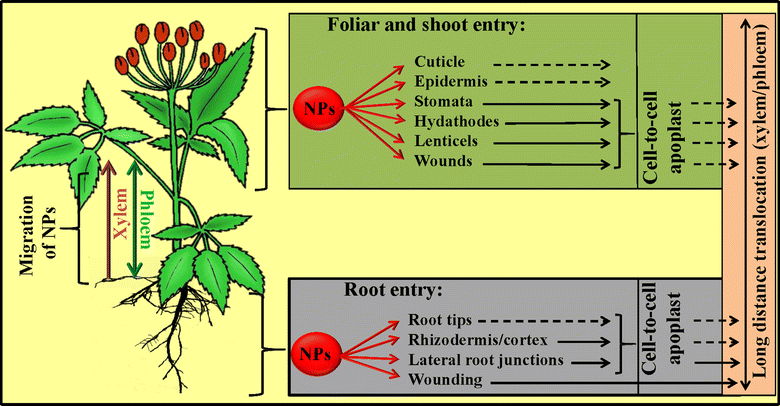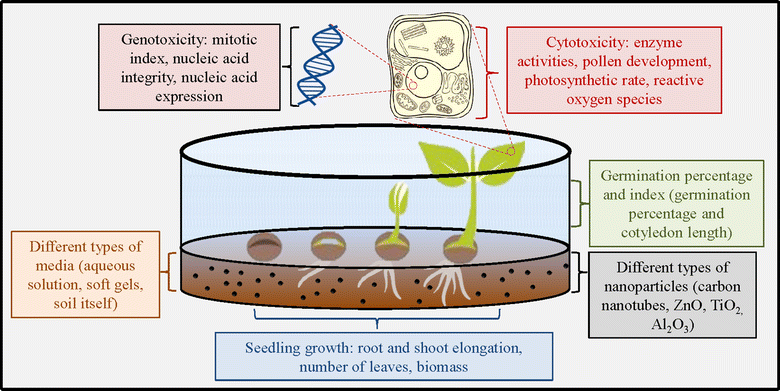Nanoparticles based on essential metals and their phytotoxicity
- PMID: 28446250
- PMCID: PMC5406882
- DOI: 10.1186/s12951-017-0268-3
Nanoparticles based on essential metals and their phytotoxicity
Abstract
Nanomaterials in agriculture are becoming popular due to the impressive advantages of these particles. However, their bioavailability and toxicity are key features for their massive employment. Herein, we comprehensively summarize the latest findings on the phytotoxicity of nanomaterial products based on essential metals used in plant protection. The metal nanoparticles (NPs) synthesized from essential metals belong to the most commonly manufactured types of nanomaterials since they have unique physical and chemical properties and are used in agricultural and biotechnological applications, which are discussed. The paper discusses the interactions of nanomaterials and vascular plants, which are the subject of intensive research because plants closely interact with soil, water, and atmosphere; they are also part of the food chain. Regarding the accumulation of NPs in the plant body, their quantification and localization is still very unclear and further research in this area is necessary.
Keywords: Agriculture; Essential metal nanoparticles; Fertilizers; Nanomaterials; Nanoparticles uptake; Phytotoxicity.
Figures
References
-
- Knauer K, Bucheli TD. Nano-materials: research needs in agriculture. Rev Suisse Agric. 2009;41:341–345.
-
- Nair R, Varghese SH, Nair BG, Maekawa T, Yoshida Y, Kumar DS. Nanoparticulate material delivery to plants. Plant Sci. 2010;179:154–163. doi: 10.1016/j.plantsci.2010.04.012. - DOI
Publication types
MeSH terms
Substances
LinkOut - more resources
Full Text Sources
Other Literature Sources



